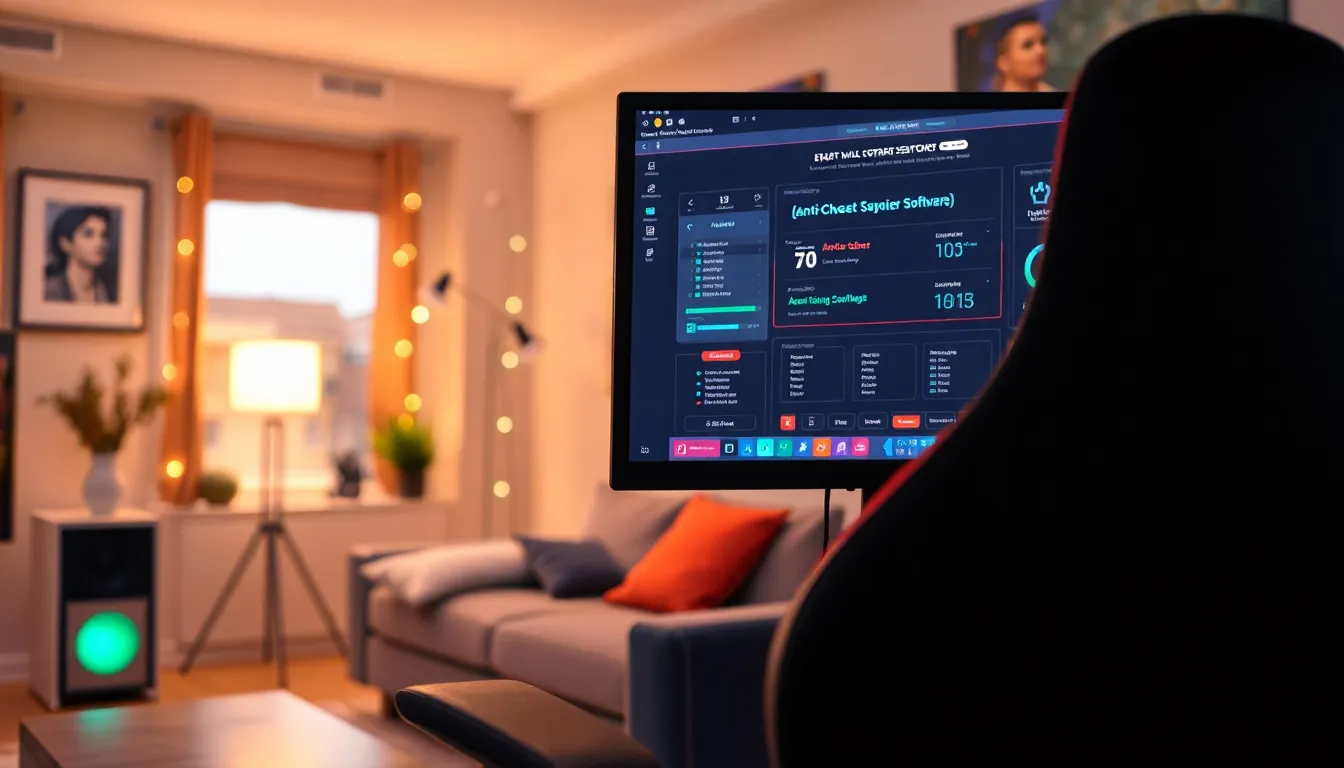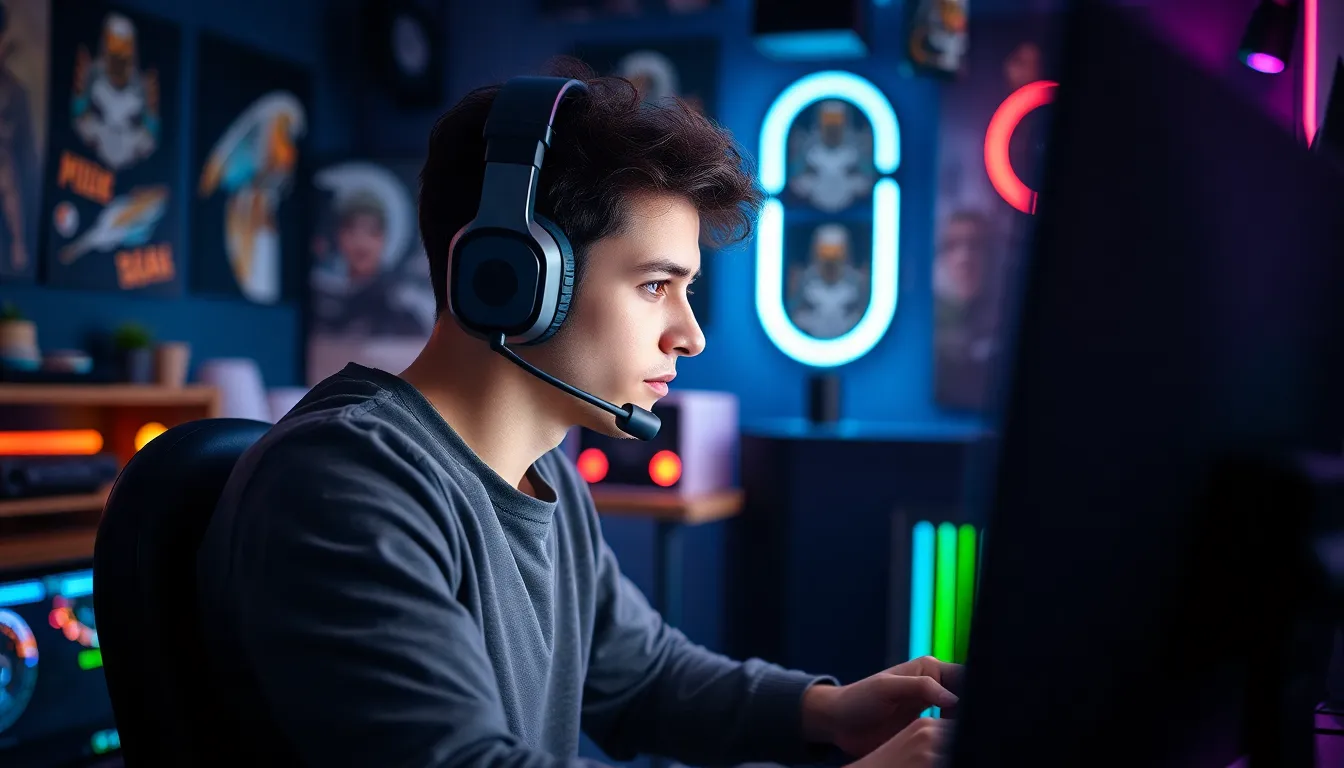In the wild world of online gaming, where every pixel counts and victory is just a headshot away, there’s a sneaky villain lurking in the shadows: cheating. Enter anti-cheat software, the unsung hero of the gaming realm, ready to restore fairness and sanity to the battlefield. It’s like having a bouncer at the club who knows exactly who’s trying to sneak in with a fake ID.
Overview of Anti-Cheat Software PC
Anti-cheat software plays a vital role in maintaining fairness in the gaming landscape. This technology utilizes various methods to detect and prevent cheating. Detection techniques include behavior analysis, memory scanning, and heuristic checks. A significant part of the software often involves real-time monitoring of player actions.
Many gaming companies implement anti-cheat solutions in their titles to preserve the integrity of competitive environments. Players experience the benefits of these protections, which reduce the occurrences of cheating. The effectiveness of anti-cheat software varies based on complexity and implementation strategies.
Numerous popular titles, such as “Counter-Strike: Global Offensive” and “Fortnite,” incorporate robust anti-cheat systems. Players encounter various challenges within these systems, including software updates that adapt to new cheats. Developers continuously refine their approaches to outsmart cheaters and combat emerging threats.
Most anti-cheat solutions follow specific protocols to analyze data gathered from the player’s hardware and software environment. Player reports frequently contribute to identifying suspected cheats. Many users remain skeptical about the impact of anti-cheat software on system performance, yet most leading solutions prioritize minimal disruption.
Security and privacy concerns also surface in discussions surrounding these software applications. Transparency about data collection remains paramount for developers to maintain player trust. Developers often communicate the limitations and capabilities of their software. In summary, anti-cheat software is essential for safeguarding the gaming community while providing a level playing field for all participants.
Popular Anti-Cheat Solutions

Anti-cheat solutions play a crucial role in preserving the integrity of online gaming. Two notable solutions include BattleEye and Easy Anti-Cheat.
BattleEye
BattleEye utilizes advanced detection techniques to identify and block cheating software. With real-time protection, it appeals to developers of popular games like “PUBG” and “Arma.” The software scans memory and analyzes player behavior to detect anomalies. These capabilities enable quick identification of cheaters, ensuring fair gameplay. Developers frequently report effective results in reducing cheat-related incidents. Game studios continuously refine BattleEye to address new cheating threats, maintaining the balance players expect.
Easy Anti-Cheat
Easy Anti-Cheat focuses on delivering a seamless gaming experience while combating cheats. Known for its implementation in games like “Fortnite” and “Apex Legends,” this solution automatically updates to counteract evolving cheating methods. The system conducts regular scans and incorporates player feedback to improve effectiveness. With an emphasis on community trust, the software ensures transparent data practices. By prioritizing user experience alongside security, it has built a solid reputation in the gaming industry.
Features of Anti-Cheat Software
Anti-cheat software employs various techniques to enhance fairness in gaming. These features focus on detecting cheating and preventing it from occurring.
Detection Methods
Detection methods used in anti-cheat software include behavior analysis and memory scanning. Behavior analysis evaluates player actions, identifying unusual patterns that suggest cheating. Memory scanning examines game data in real-time, searching for known cheat signatures. Developers frequently enhance these methods to keep pace with new cheating strategies. Heuristic checks contribute additional layers of security, predicting potential cheating trends based on statistical models. Games like “Counter-Strike: Global Offensive” utilize these advanced detection methods to maintain a competitive environment.
Prevention Techniques
Prevention techniques create barriers against cheating by implementing various architecture features. Client-side software operates on players’ machines, monitoring for unauthorized modifications or tools. Server-side integrity checks verify game data against expected values, quickly flagging discrepancies. Automatic updates frequently occur to address emerging cheats, ensuring the system adapts as necessary. Player reporting mechanisms empower the community to assist in identifying cheaters. Transparency in data practices helps build trust, reassuring players about their system performance while enhancing security measures. Systems like BattleEye and Easy Anti-Cheat illustrate these prevention techniques effectively.
Effectiveness of Anti-Cheat Software
Anti-cheat software plays a crucial role in maintaining fairness within online gaming. Various solutions significantly contribute to identifying and mitigating cheating activities.
Success Stories
Popular games like “Counter-Strike: Global Offensive” and “Fortnite” demonstrate the success of anti-cheat software. Players report fewer instances of cheating, leading to enhanced gaming experiences. For example, BattleEye’s implementation in “PUBG” has resulted in a notable drop in unauthorized practices. Easy Anti-Cheat has also made a considerable impact, successfully removing numerous cheaters and improving overall gameplay. Transparency in data practices fosters trust among players, encouraging communities to feel more secure in their gaming environments.
Limitations
Despite the successes, anti-cheat software faces limitations. Some advanced cheats can evade detection methods, making it challenging for developers to maintain integrity. Players sometimes express concerns over performance issues related to resource consumption. Transparency in data collection raises privacy issues for some users, causing hesitation in embracing these solutions. Quick adaptations to emerging threats remain a consistent challenge, as cheaters constantly evolve their tactics to bypass safeguards. Addressing these limitations is vital for maintaining effectiveness and player trust within the gaming community.
The role of anti-cheat software in online gaming cannot be overstated. It serves as a vital guardian of fairness and integrity in competitive environments. By utilizing advanced detection methods and continuous updates, these systems strive to outsmart evolving cheating tactics.
As gaming communities grow, so does the necessity for effective solutions. Players deserve an environment where skill and strategy prevail over dishonesty. While challenges remain, the ongoing development of anti-cheat technologies promises a more equitable gaming experience. Trust and transparency will continue to be key in fostering a positive relationship between players and developers.



